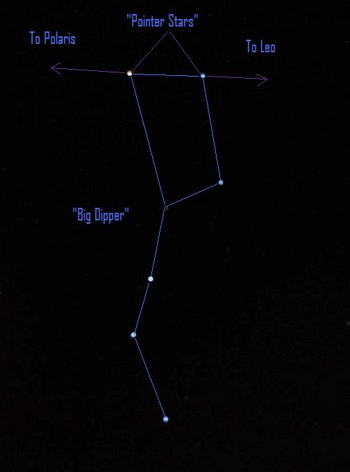On February 28, 2018 – as darkness falls around the world – the star Regulus, aka the Heart of the Lion in the constellation Leo, appears near the moon. Although Regulus rates as a 1st-magnitude star (that is, one of the brightest stars in the sky), you might have difficulty spotting it in the glare of the waxing gibbous moon on this date.
The first of a monthly series of 19 lunar occultations of Regulus started on December 18, 2016, and will conclude on April 24, 2018. That means Regulus will be briefly hidden behind the moon – as seen from parts of the world – on this date. The February 28 (March 1), 2018 occultation of Regulus is visible from Greenland, northern Canada and Alaska.
Regulus is considered to be the most important of the four Royal Stars of ancient Persia.
These Royal Stars mark the four quadrants of the heavens. They are Regulus, Antares, Fomalhaut, and Aldebaran.
Four to five thousand years ago, the Royal Stars defined the approximate positions of equinoxes and solstices in the sky. Regulus reigned as the summer solstice star, Antares as the autumn equinox star, Fomalhaut as the winter solstice star, and Aldebaran as the spring equinox star. Regulus is often portrayed as the most significant Royal Star, possibly because it symbolized the height and glory of the summer solstice sun. Although the Royal Stars as seasonal signposts change over the long coarse of time, they still mark the four quadrants of the heavens.

An imaginary line drawn between the pointer stars in the Big Dipper – the 2 outer stars in the Dipper’s bowl – points in one direction toward Polaris, the North Star, and in the opposite direction toward Leo.
Regulus coincided with the summer solstice point some 4,300 years ago. In our time, the sun has its annual conjunction with Regulus on or near August 22, or about two months after the summer solstice – or alternatively, one month before the autumn equinox. Regulus will mark the autumn equinox point some 2,100 years into the future.
Bottom line: On the night of February 28, 2018, use the waxing gibbous moon to find the Royal Star Regulus!
Enjoying EarthSky so far? Sign up for our free daily newsletter today!
EarthSky astronomy kits are perfect for beginners. Order today from the EarthSky store
from EarthSky http://ift.tt/1RN1qFp
On February 28, 2018 – as darkness falls around the world – the star Regulus, aka the Heart of the Lion in the constellation Leo, appears near the moon. Although Regulus rates as a 1st-magnitude star (that is, one of the brightest stars in the sky), you might have difficulty spotting it in the glare of the waxing gibbous moon on this date.
The first of a monthly series of 19 lunar occultations of Regulus started on December 18, 2016, and will conclude on April 24, 2018. That means Regulus will be briefly hidden behind the moon – as seen from parts of the world – on this date. The February 28 (March 1), 2018 occultation of Regulus is visible from Greenland, northern Canada and Alaska.
Regulus is considered to be the most important of the four Royal Stars of ancient Persia.
These Royal Stars mark the four quadrants of the heavens. They are Regulus, Antares, Fomalhaut, and Aldebaran.
Four to five thousand years ago, the Royal Stars defined the approximate positions of equinoxes and solstices in the sky. Regulus reigned as the summer solstice star, Antares as the autumn equinox star, Fomalhaut as the winter solstice star, and Aldebaran as the spring equinox star. Regulus is often portrayed as the most significant Royal Star, possibly because it symbolized the height and glory of the summer solstice sun. Although the Royal Stars as seasonal signposts change over the long coarse of time, they still mark the four quadrants of the heavens.

An imaginary line drawn between the pointer stars in the Big Dipper – the 2 outer stars in the Dipper’s bowl – points in one direction toward Polaris, the North Star, and in the opposite direction toward Leo.
Regulus coincided with the summer solstice point some 4,300 years ago. In our time, the sun has its annual conjunction with Regulus on or near August 22, or about two months after the summer solstice – or alternatively, one month before the autumn equinox. Regulus will mark the autumn equinox point some 2,100 years into the future.
Bottom line: On the night of February 28, 2018, use the waxing gibbous moon to find the Royal Star Regulus!
Enjoying EarthSky so far? Sign up for our free daily newsletter today!
EarthSky astronomy kits are perfect for beginners. Order today from the EarthSky store
from EarthSky http://ift.tt/1RN1qFp

Aucun commentaire:
Enregistrer un commentaire